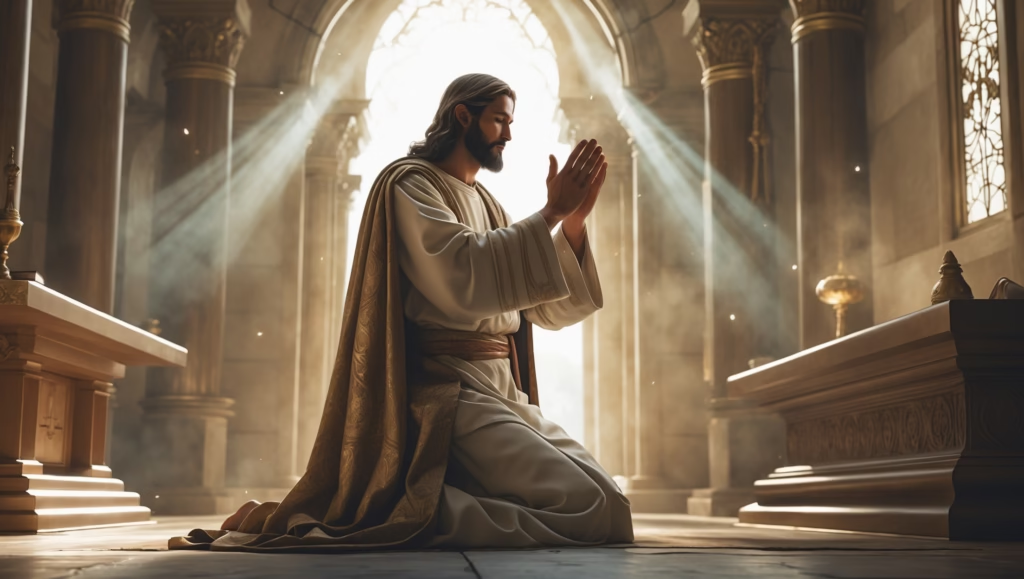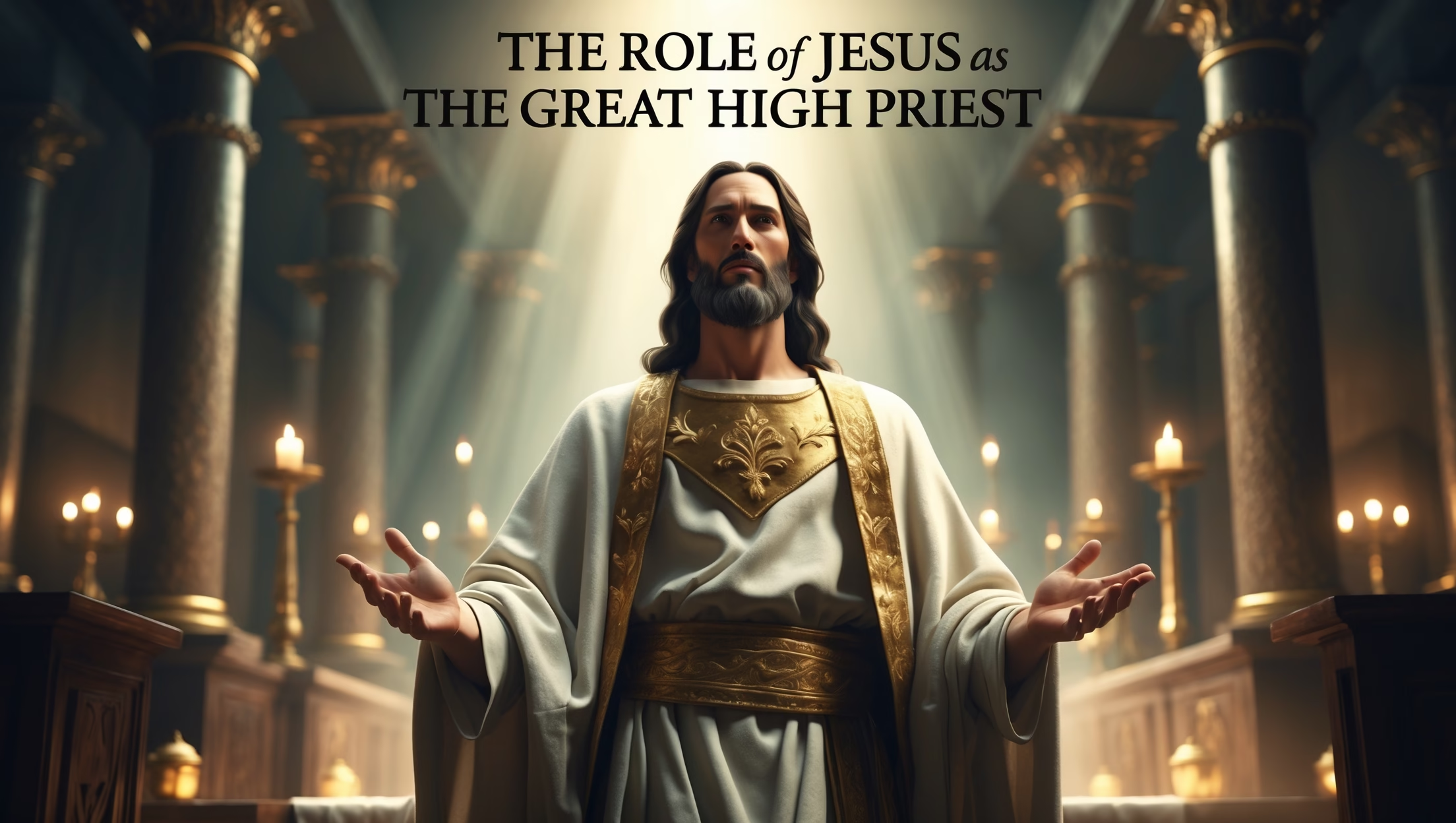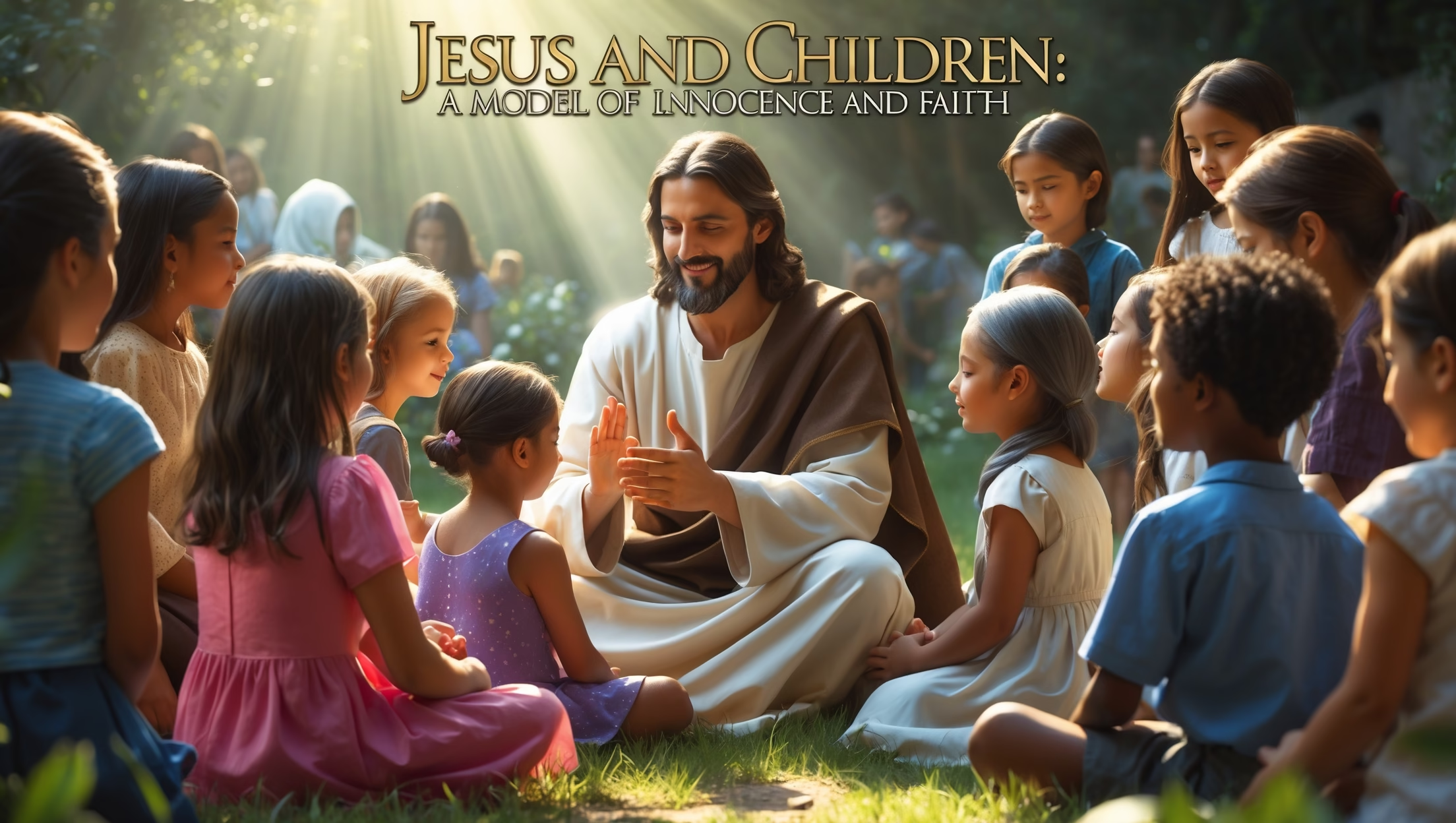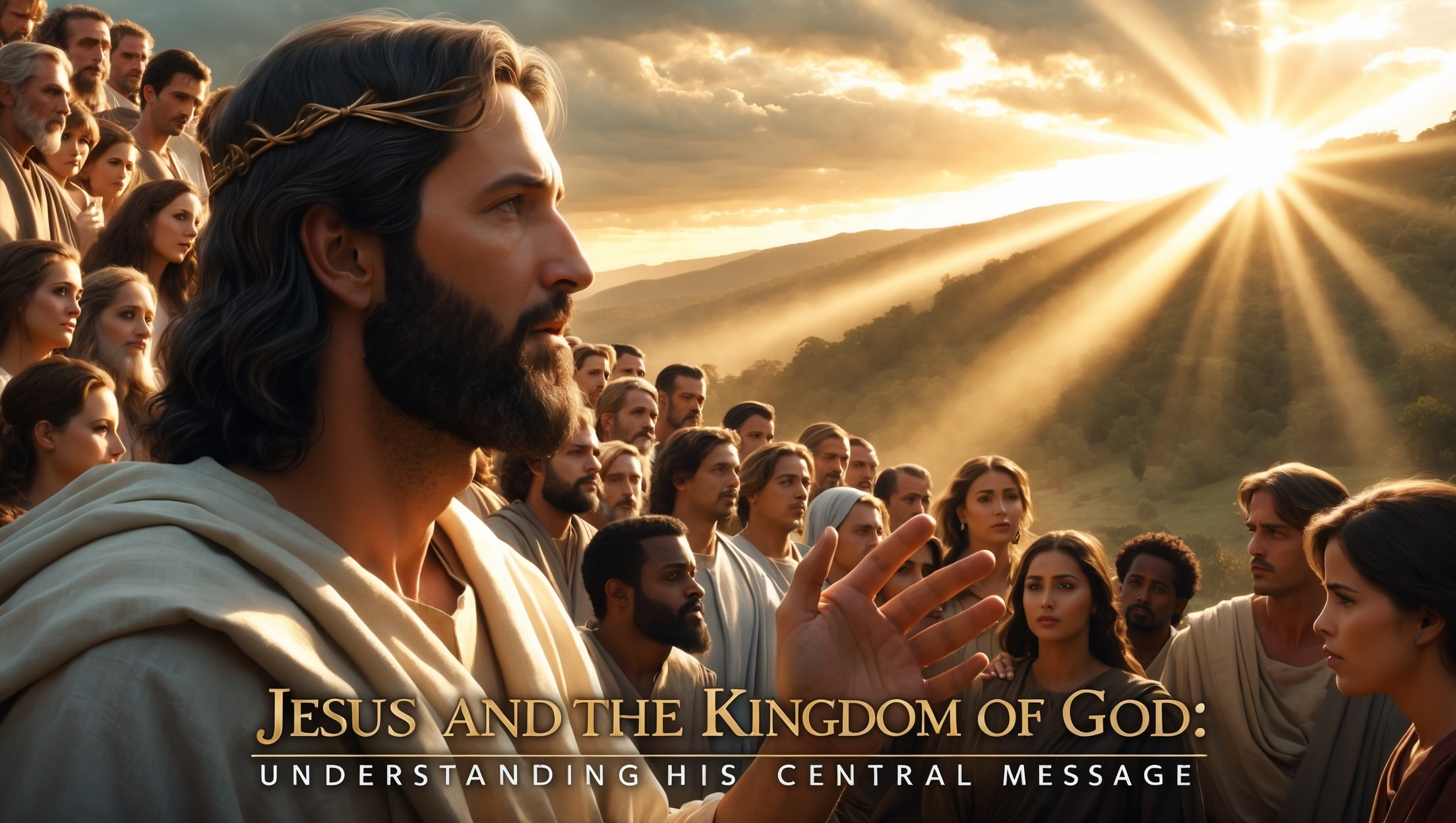Introduction
The image of Jesus as the Great High Priest is one of the most profound theological truths in the New Testament. It reveals Him as the ultimate mediator between God and humanity, bridging the gap caused by sin and offering access to God’s presence. Unlike the temporary and imperfect priesthood of the Old Testament, Jesus’ priesthood is eternal, perfect, and based on His once-for-all sacrifice. Through His role as the Great High Priest, Jesus not only secures salvation but also continually intercedes for His people, providing assurance, hope, and confidence in their relationship with God.

Old Testament High Priests
To fully understand the role of Jesus as the Great High Priest, it is essential to look back at the Old Testament priesthood. The priesthood was established by God through Moses, with Aaron and his descendants chosen as priests to serve Israel. Their primary function was to represent the people before God by offering sacrifices for sin, leading worship, and maintaining the rituals of the tabernacle and temple.
The most significant figure was the high priest, who held a unique and sacred role. Once a year, on the Day of Atonement (Yom Kippur), the high priest would enter the Most Holy Place with the blood of a sacrifice, sprinkling it on the mercy seat to atone for the sins of the people (Leviticus 16). This act symbolized the covering of sin, but it had to be repeated every year because the sacrifices were temporary and could not permanently remove sin.
The priesthood highlighted two key truths: the seriousness of sin and the need for mediation between God and humanity. However, the weakness of this system was that the priests themselves were sinful and mortal, needing sacrifices for their own sins as well. This limitation pointed forward to the coming of a greater, eternal High Priest—Jesus Christ.
Jesus’ Eternal Priesthood
Jesus fulfills and surpasses the role of the Old Testament high priest through His eternal priesthood. The book of Hebrews explains that Jesus is a priest “forever, in the order of Melchizedek” (Hebrews 7:17). Unlike the Levitical priests who were bound by ancestry and mortality, Jesus’ priesthood is based on the power of His indestructible life and divine appointment.
The superiority of High Priest Jesus lies in His once-for-all sacrifice. While the Old Testament priests repeatedly offered the blood of animals, Jesus offered Himself as the perfect Lamb of God. His death on the cross was sufficient to pay for the sins of all humanity, past, present, and future. As Hebrews 9:12 declares, “He entered the Most Holy Place once for all by His own blood, thus obtaining eternal redemption.”
Moreover, His resurrection and ascension ensure that His priesthood is eternal. Unlike human priests who died and were replaced, Jesus lives forever, guaranteeing that His work on behalf of His people never ceases. This eternal aspect of His priesthood provides believers with unshakable confidence that their salvation is secure and complete.
Intercession for Believers
Another vital dimension of Jesus’ priesthood is His ongoing intercession. The Old Testament high priest interceded by offering sacrifices and prayers for the people, but Jesus’ intercession is far greater because it is based on His finished work on the cross. He continually stands before the Father as our advocate, ensuring that the benefits of His sacrifice are applied to those who believe in Him.
Romans 8:34 affirms this truth: “Christ Jesus who died—more than that, who was raised to life—is at the right hand of God and is also interceding for us.” This reveals that Jesus intercedes for us not only by defending us against accusations of guilt but also by presenting us as righteous through His sacrifice.
His intercession is not passive but active. As the Great High Priest, Jesus provides believers with direct access to God. Hebrews 4:15–16 beautifully captures this reality: “For we do not have a high priest who is unable to empathize with our weaknesses, but we have one who has been tempted in every way, just as we are—yet He did not sin. Let us then approach God’s throne of grace with confidence, so that we may receive mercy and find grace to help us in our time of need.”
This passage highlights Jesus’ compassion and understanding. Having lived as a human, He fully grasps human weakness and struggle. Thus, His intercession is not only judicial but also deeply relational, assuring believers of both God’s mercy and His sustaining grace.
Application Today
The role of Jesus as the Great High Priest is not merely a theological concept but a living reality that shapes the Christian life today. Several key applications flow from this truth:
- Confidence in Salvation
Believers can live with the assurance that their sins are forgiven once and for all through Jesus’ sacrifice. They no longer need to fear judgment because their standing before God is based on Christ’s perfect righteousness, not their own efforts. - Access to God’s Presence
Through Jesus’ priesthood, the barrier of sin that once separated humanity from God has been removed. Christians now have direct access to God through prayer and worship. They do not need a human mediator because Jesus, the eternal High Priest, is always interceding on their behalf. - Strength in Weakness
Knowing that Jesus empathizes with human struggles gives believers comfort and courage. When facing temptation, suffering, or doubt, they can approach Him with confidence, knowing He provides mercy and grace in times of need. - Motivation for Holiness
Jesus’ priesthood calls believers to live lives that honor God. Just as the priests in the Old Testament were consecrated for service, Christians are called to reflect the holiness of their High Priest by pursuing righteousness and serving others. - Hope in Eternity
The eternal priesthood of Jesus provides hope beyond this life. Because He lives forever, believers have the assurance of eternal life in His presence, where sin, suffering, and separation will be no more.
Conclusion
The role of Jesus as the Great High Priest is central to the Christian faith. By fulfilling and surpassing the Old Testament priesthood, Jesus establishes Himself as the eternal mediator who bridges the gap between God and humanity. His once-for-all sacrifice secures eternal redemption, and His ongoing intercession assures believers of God’s mercy and grace.
This truth is not only a source of theological insight but also a foundation for daily living. It provides confidence in salvation, direct access to God, strength in weakness, motivation for holiness, and hope for eternity. In a world where people often struggle with guilt, uncertainty, and fear, the message of High Priest Jesus offers lasting assurance: that through Him, believers are forever reconciled to God.










